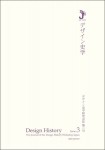目次
巻頭
デザイン史学研究会について
編集方針について
編集委員会と編集諮問委員会
論文
英国における日本美術コレクションの形成過程??山中商会の活動を中心に/門田園子
山本鼎の農民美術運動??ラスキン、モリス受容としての側面から/辻元由紀
特別寄稿
戦後復興期の日本デザインを語る/中山修一
回想のデザイン史研究/利光功
戦後のデザイン教育をめぐって/日野永一
デザイン振興行政に携わって/小関利紀也
GKインダストリアルデザイン研究所とともに/曽根靖史
書評
原研哉『デザインのデザイン』/評者 針貝綾
菊池裕子『日本の近代化と民藝理論??文化ナショナリズムとオリエンタル・オリエンタリズム』/評者 菅靖子
ノイズ
デザインジャーナリズムの10年/渡部千春
投稿要項
会則
執筆者について
–
バックナンバーの購入方法について
巻頭
デザイン史学研究会について
編集方針について
編集委員会と編集諮問委員会
論文1
英国における日本美術コレクションの形成過程——山中商会の活動を中心に
門田園子
キーワード
山中商会、日本美術工芸品、日本美術収集、コレクター、1915年英国赤十字展覧会、日本協会
概要
山中商会は1890年代から約半世紀にわたり、国内外で美術品の売買を行っていた日本人美術商である。商会は個人コレクターへの物品販売、公的機関への寄贈を含む美術品の取引及び買い戻し、カタログの出版、展覧会の開催、工芸品、家具の製造など、多岐にわたる活動を行っており、美術品の移動や紹介に貢献していたが、その全容はいまだ明らかにされていない。本論では、山中商会の英国での活動に焦点を絞り、英国における日本美術工芸品コレクションの形成過程を考察した。第3章ではこれまで見落とされてきた1915年に開催された日本美術工芸品の展観である英国赤十字社展覧会に注目したことで、商会を中心に繋がっていた20世紀初頭までの英国の日本美術コレクター及びコレクションの具体的内容を確認することができた。当時は日本美術の学術的研究が進められていたが、ロンドン支店にいた商会のスタッフは専門知識を生かし、英国の研究者に助言していた。日本協会を中心としたコレクターのコミュニティーから、美術館、博物館の日本美術コレクションの体系化が進められ、専門家が輩出されていったことが今回の研究から考察できるが、山中商会はコレクターの仲介者として英国に現在ある日本美術コレクションの性格を決め得る役割を果たしていたと考えられる。
論文2
山本鼎の農民美術運動——ラスキン、モリス受容としての側面から
辻元由紀
キーワード
民衆芸術、ラスキン、モリス、農民美術、山本鼎
概要
農民美術運動は、版画家山本鼎 (1882-1946) が大正9年に長野県でおこした美術運動である。創業後短期間で全国的な広がりをみせた農民美術運動であるが、その思想背景を明らかにした研究は少ない。そこで本論文では、農民美術運動の思想背景、同運動が大正、昭和という時代にどのように受け入れられ変化していったかを明らかにした。
思想背景として考えられるのが、それ以前に繰り広げられた民衆芸術論争である。民衆芸術論争には、本間久雄、加藤一夫等数多くの文化人が議論に参加しているが、それによってもたらされた民衆芸術への興味と理解の深化が、農民美術運動の発展と受容に寄与したとも言える。さらに、農民美術運動の根は、エレン・ケイ、ウィリアム・モリスから影響を受けた本間の教化的民衆芸術論にあるともいえるだろう。
農民美術運動の性格は、大正8年の建業から大正12年の関東大震災までの啓蒙的農民美術と、関東大震災以降の経済性重視の農民美術に分けられる。この農民美術変化の状況を、 当時の美術、工芸雑誌からの検証を通して明示した。本論文では、農民美術運動の背景にラスキン、モリスの思想があったことも示している。また、受容層にも同様の思想があったこと、田園と田園都市への嗜好が存在したことによって農民美術が受け入れられ普及したことも示した。
特別寄稿
戦後復興期の日本デザインを語る/中山修一
回想のデザイン史研究/利光功
戦後のデザイン教育をめぐって/日野永一
デザイン振興行政に携わって/小関利紀也
GKインダストリアルデザイン研究所とともに/曽根靖史
書評
原研哉『デザインのデザイン』/評者 針貝綾
菊池裕子『日本の近代化と民藝理論??文化ナショナリズムとオリエンタル・オリエンタリズム』/評者 菅靖子
ノイズ
デザインジャーナリズムの10年/渡部千春
投稿要項
会則
執筆者について
Contents
Editorial
About the DHWJ
Editorial Policy
Editorial Board and Editorial Advisory Board
Articles
Developing a Collection of Japanese Art in Britain: A Case Study on Yamanaka and Company / Monden Sonoko
The Influence of Ruskin and Morris on Yamamoto Kanae’s Peasant Art Movement / Tsujimoto Yuki
Special Contributions
Views on the Japanese Design in the Post-war Period of Reconstruction / Nakayama Shuichi
Design History Research Memories / Toshimitsu Isao
Post-war Design Education / Hino Eiichi
Design Promotion Administration / Koseki Rikiya
Along with the GK Industrial Design Associates / Sone Yasumi
Book Reviews
Hara Kenya, Dezain no Dezain (The Design of Design) / reviewed by Harikai Aya
Yuko Kikuchi, Japanese Modernisation and Mingei Theory: Cultural Nationalism and Oriental Orientalism / reviewed by Suga Yasuko
Noise
A Decade as a Design Journalist / Watabe Chiharu
Guidelines for Submission of Manuscripts
Constitution and Bylaws
Notes on Contributors
–
How to Order Your Back Issues
Editorial
About the DHWJ
Editorial Policy
Editorial Board and Editorial Advisory Board
Article 1
Developing a Collection of Japanese Art in Britain: A Case Study on Yamanaka and Company
Monden Sonoko
Keywords
Yamanaka &Co., Japanese Art and Handicraft, Japanese Art Collecting, Collectors, 1915 the British Red Cross Exhibition, Japan Society
Abstract
Yamanaka & Co., Japanese art dealer, had traded for arts and handicrafts throughout the world since 1890s. The company involved in various activities as selling artifacts to private collectors, business with public institutions, publications of catalogues, holding exhibitions, and production of crafts and furniture, and so on. However, so far the study of the company has been superficial. I limit the discussion to Yamanaka’s activities in Britain, and consider how Japanese art collections had formed there. Central to the issue is the 1915 British Red Cross exhibition, mentioned in Chapter 3, which was a loan exhibition showing Japanese arts and handicrafts at Yamanaka’s showroom. Examining the exhibition offers the key to an understanding of Japanese art collectors and collections related to Yamanaka in the early Twentieth Century Britain. In those days, staffs of the company advised to British scholars with using expert knowledge. Collectors’ community such as Japan Society organized Japanese art collections in museums, and turned out specialists of the specific area. We can recognise that Yamanaka & Co. took an active part in making Britain’s Japanese art collections in existence.
Article 2
The Influence of Ruskin and Morris on Yamamoto Kanae’s Peasant Art Movement
Tsujmoto Yuki
translated by Rochel Saunders
Keywords
Popular Art, Peasant Art, Morris, Ruskin, Yamamoto Kanae
Abstract
The Peasant Art Movement was, founded in 1920 by the print-maker Yamamoto Kanae (1882-1946). In a very short time it had become a national phenomenon, but there has been little research to date on the philosophical foundations of the Movement. This paper addresses the background to the Movement, and the way in which it was received.
The foundations were for the Movement laid with the so-called People’s Art Controversy in which Honma Hisao, Kato Kazuo, and a number of other intellectuals participated. The controversy deepened general interest and understanding of People’s Art and smoothed the path for the widespread acceptance of Yamamoto’s Movement. The ideas of E11en Key and Wi11iam Morris deeply influenced Yamamoto’s theory of educational People’s Art, which was at the root of his Peasant Art Movement.
The Movement had an educational character from the time of its founding in 1920 until the Great Kanto Earthquake of 1923. After the earthquake it became based much more on economic contingency, and this paper tracks these changes using evidence from contemporary magazines. It also demonstrates that the ideas of Ruskin and Morris were very much part of the philosophical base of the Peasant Art Movement, and that similar aspirations were also circulating in wider society where people were beginning to feel the desire to live in the country, or in so-called ‘garden cities’. This trend helped to explain the speed with which Peasant Art spread.
Special Contributions
Views on the Japanese Design in the Post-war Period of Reconstruction / Nakayama Shuichi
Design History Research Memories / Toshimitsu Isao
Post-war Design Education / Hino Eiichi
Design Promotion Administration / Koseki Rikiya
Along with the GK Industrial Design Associates / Sone Yasumi
Book Reviews
Hara Kenya, Dezain no Dezain (The Design of Design) / reviewed by Harikai Aya
Yuko Kikuchi, Japanese Modernisation and Mingei Theory: Cultural Nationalism and Oriental Orientalism / reviewed by Suga Yasuko
Noise
A Decade as a Design Journalist / Watabe Chiharu
